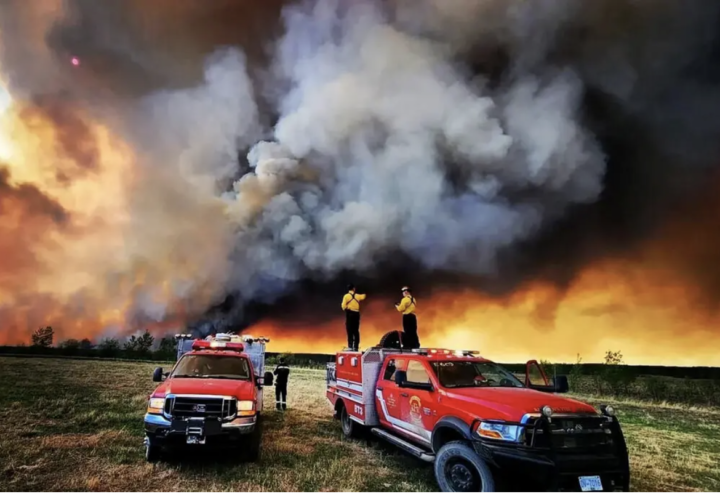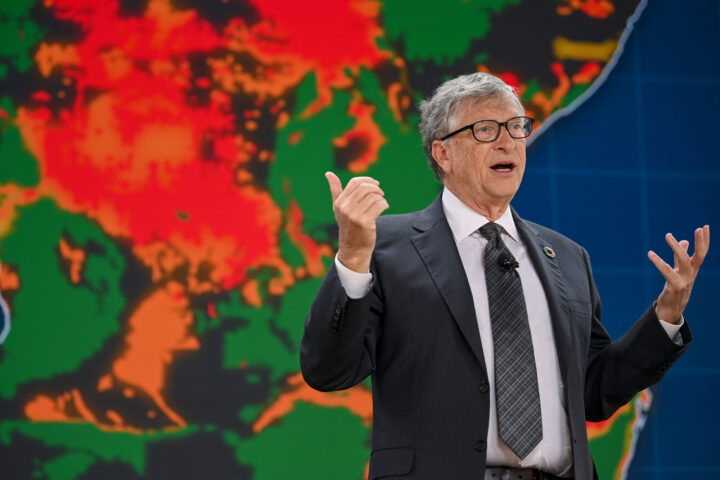Firefighters near Fort St. John, British Columbia,
Canada. Credit: Reuters
A post on Instagram has claimed that the amount of carbon released into the atmosphere during the wildfires in Canada exceeds the volume produced by humans in the last 100 years.
“You can TRY all that electric car, solar power, zero-emission BS all you want but the facts remain: When Mother Nature is done with us, WE’LL KNOW IT,” the caption reads.
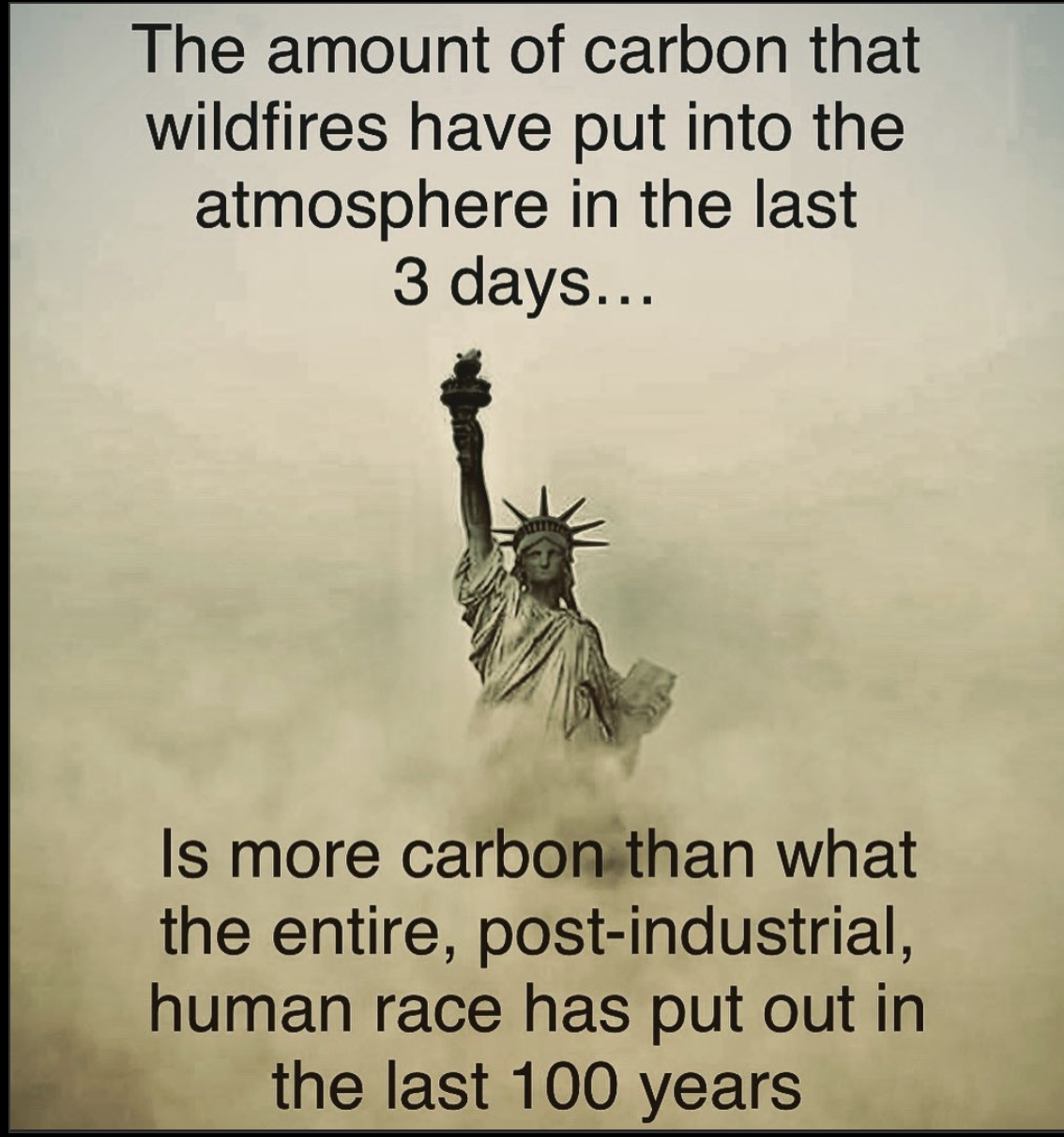
The post has over 6,500 likes on Instagram. A similar version was also found on Facebook.
Advertisement
WILDFIRE IN CANADA
Since the beginning of 2023, several wildfires have been recorded in Canada, with huge smoke extending into parts of the US. As of June, Canada had recorded more than 400 wildfires, burning simultaneously across the nation, and over half of it was clearly out of control.
The fire disaster across western Canada drove thousands of residents from their homes. Also, it forcefully led to the suspension of production by oil and gas companies.
Advertisement
The magnitude of the fire led to the contamination of the air which enveloped several provinces in the country including the Great Lakes region and some northeastern parts of the US.
The US Environmental Protection Agency reported that over 100 million people were affected by air quality alerts in areas including Philadelphia, Chicago, Atlanta, Philadelphia, Pennsylvania, Syracuse, Bethlehem, and New York.
COMPARING CO2 FROM 2023 WILDFIRES AND THE LAST 100 YEARS
Experts do not agree that carbon emissions from wildfires are much more than what the human race produced in the last century. In fact, they believe that they are largely incomparable.
Advertisement
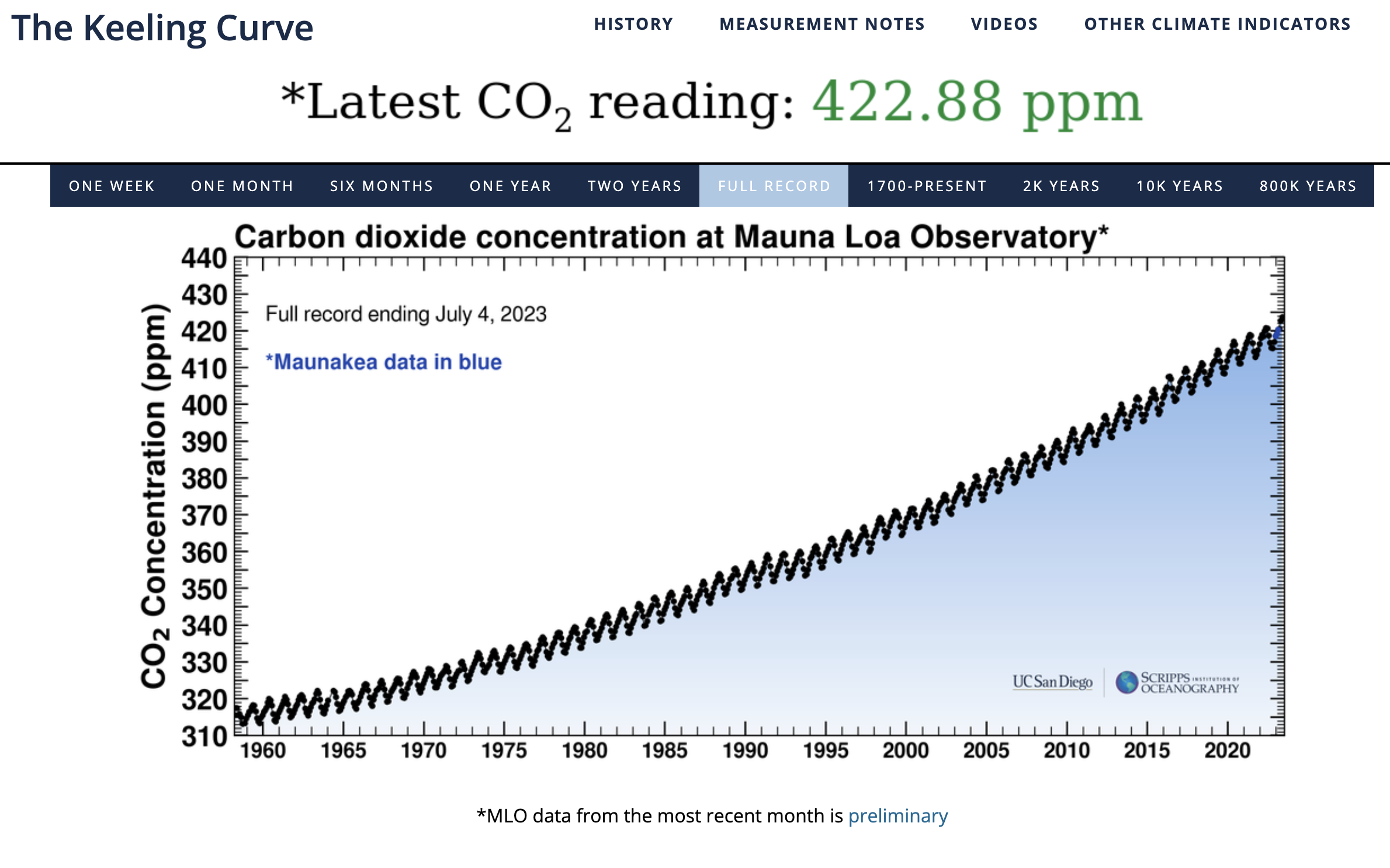
TheCable looked into the Keeling Curve, a daily record of global atmospheric CO2 concentration, by the Scripps Institution of Oceanography at the University of California. A study of the graph clearly shows no significant spike in atmospheric CO2 for the year 2023 so far.
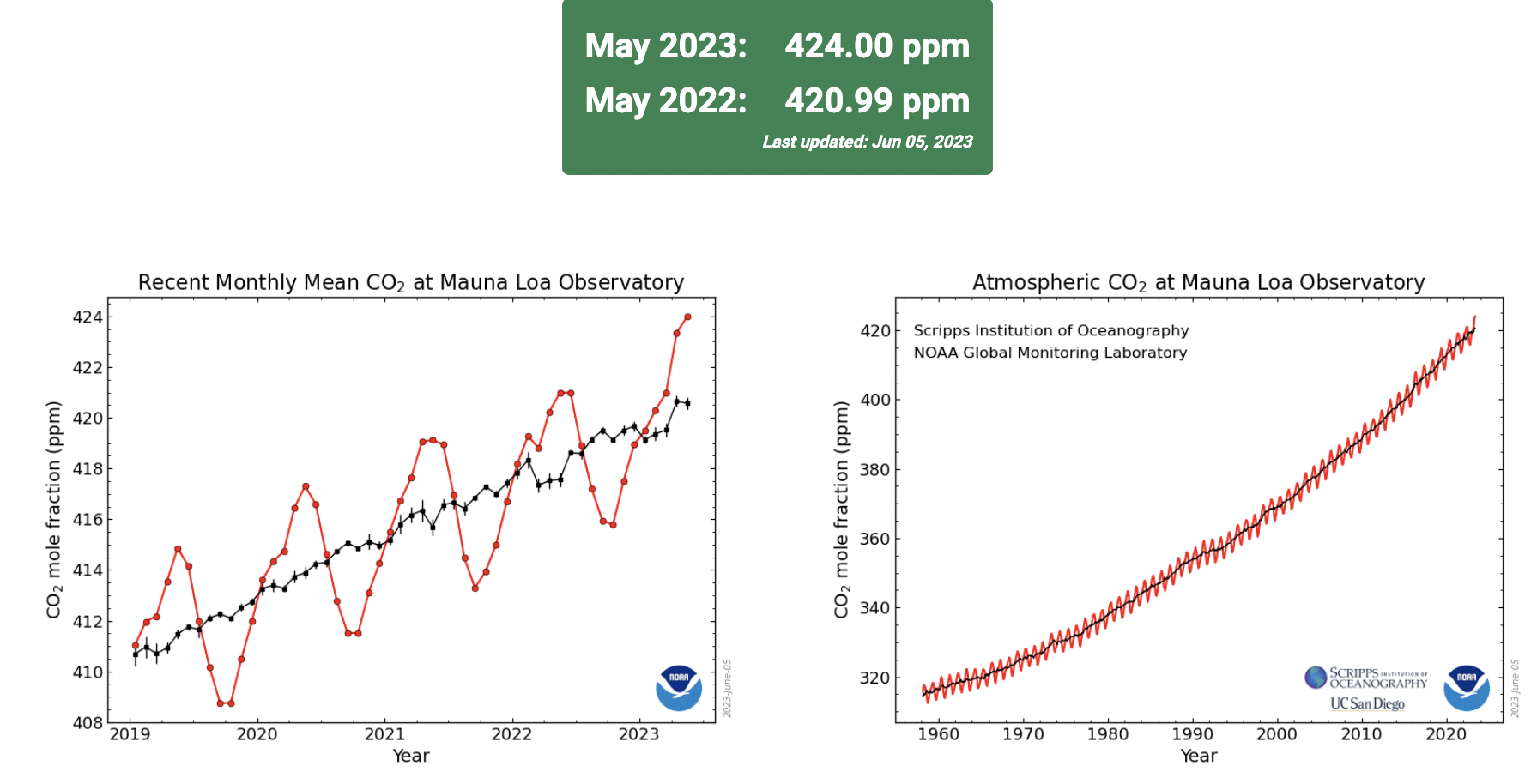
In addition, the carbon emission graph published by the National Oceanic and Atmospheric Administration (NOAA), which records the significant rise in atmospheric CO2 since 1958 was examined. The graph did not reveal any remarkable increase in CO2 to buttress the social media claim.
Taiwo Ogundeji, a doctorate student, researching environmental systems and climate change at the Federal University of Agriculture Abeokuta, told TheCable that it’s ridiculous to compare emissions from 3 months of wildfire with carbon discharged in the last 100 years or post-industrial revolution.
“The statement is false,” he said.
Advertisement
“Saying the amount of carbon from wildfires in the few days of one year outweighs the cumulation of carbon in 100 years is clearly a baseless exaggeration.
“Aside from industrialisation and other anthropogenic contributions to atmospheric carbon, we must not forget that high magnitude of wildfires were recorded in the past 100 years.”
Advertisement
Werner Kurz, a senior research scientist at the Canadian Forest Service, had said the “total emissions from all human activities since 1850 is nearly 10,000 times more than the emissions from Canadian wildfires in 2023”.
VERDICT
Advertisement
The claim that the recent wildfires in Canada released more carbon in 3 days compared to the last 100 years is false. Statistical analysis of CO2 emission in alignment with reviews by experts shows the claim lacks merit.
This content was produced with support from the Independent Media Response Fund, an initiative of the Check Global Program at Meedan to respond to global challenges through hyperlocal initiatives. The fund is supported by the Swedish International Development Cooperation Agency (Sida).
Advertisement
Add a comment

